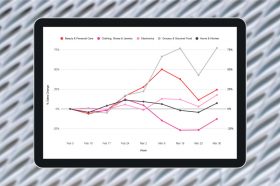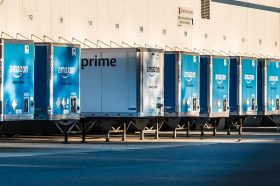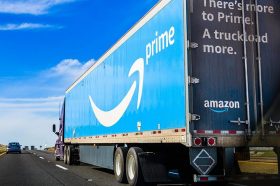Resources - Blog
Should Brands Turn Off Amazon Ads During the COVID-19 Pandemic?

Stay on top of the latest e-commerce and marketplace trends.
The COVID-19 outbreak has caused tremendous impacts on e-commerce businesses and consumer behavior. These are challenging times, compounded with great uncertainty, but one thing remains clear: Amazon is — and will continue to be — a central part of consumers’ lives.
From CPGs to entertainment products, consumers are increasingly relying on Amazon for their shopping needs, and traffic on the platform is staggering. Brands must use this time to find opportunities to build personalized relationships with their audiences and appeal to their customers’ specific needs while also taking into consideration their own unique business challenges, such as inventory positions and shipping speed.
Many brands are still strategizing their short-term responses to the COVID-19 crisis, and one of the biggest questions they have is what to do with their advertising budgets for not only the weeks ahead but the remainder of 2020. Do consumers want to see ads during the COVID-19 crisis? Should you pause your ad spend until the outbreak subsides?
Nearly four in 10 consumers, ages 16 to 64, feel that brands should continue advertising during this time, according to eMarketer. However, campaigns that were planned pre-pandemic may no longer be appropriate, as consumers see information about how the crisis is being handled — 77% say they want to see ads talk about how the brand is being helpful in the new everyday life and 75% say brands should not exploit the COVID-19 crisis for self-promotion.
Certainly, these unprecedented times require adjustments to your advertising strategy. In doing so, there are several factors you need to consider:
- Your inventory position and supply chain
- Fluctuations in demand on the category and product levels
- Adjustments in budget and budget allocations
- Consumer behavioral changes in search
- How to adapt your messaging to your audience’s needs
1. Monitor Your Inventory Levels
The unprecedented surge in demand on Amazon caused a series of burdens on Amazon’s fulfillment network and merchants’ supply chains. Some brands have benefited from increased demand with unexpected spikes in sales over the last few weeks, while others have been forced to pause their selling strategy due to inventory stockouts or delivery restrictions.
Though Amazon has since lifted its inbound FBA inventory restriction to now allow for both essential and nonessential inventory shipments, there are still limits to how many products per item sellers can ship into its warehouses so the company can continue prioritizing fulfillment of essential products.
Has the surge in demand forced you to pull inventory from your future supply to fulfill current orders? Do you have excess or stale inventory you were unable to sell through during the FBA inventory restriction? Do you anticipate long-term supply chain constraints that might affect your ability to fulfill future orders?
Consider increasing or decreasing your bids, depending on your inventory levels and your ability to restock inventory in the weeks and months ahead. If you are out of stock or expect to go out of stock on certain products, pause your ad campaigns to avoid taking consumers to an out-of-stock listing. On the other hand, you may want to increase your spend on products with high inventory levels that might present an advantage over your competitors.
Sponsored Products and Display ads will automatically pause when the promoted products go out of stock and will automatically resume when the products are back in stock. Sponsored Brands campaigns will also automatically pause when the linked product listing has less than two items in stock. However, for Sponsored Brands campaigns that link to a Brand Store, the campaign will continue to run regardless of inventory levels.
Amazon Stores is a particularly useful feature to use during this time, as you can highlight your full product selection in your own landing page on Amazon, which can help you avoid being reliant on specific products in your catalog.
Featured deals, best sellers, and recommended products content tiles will automatically hide out-of-stock products, as will product grid tiles using the automated option. For product grid tiles using the manual option, as well as full-size product tiles with the product detail option, you can select to have out-of-stock products hidden from your Store.
2. Track Your Product Demand
Unsurprisingly, products in essential categories like Grocery, Baby Products, and Health and Household have seen a tremendous surge in demand — but how can you determine if your category is experiencing a long-term shift in consumer demand or a short-term spike due to bulk-purchase trends?
Ask yourself if your brand expects the current surge in demand is driving incremental sales due to increased consumption or if it is pulling forward future demand due to stockpiling. Your answers to these questions will determine your forecasts for the remainder of the year and their implications for your advertising budgets.
If your brand is experiencing a spike in sales but not increased consumption, now is the time to hone in on those shoppers to win their future purchases and customer loyalty over the long term.
In this instance, you can consider leveraging Subscribe & Save. Promote items in branded-keyword campaigns that have high Subscribe & Save rates. This will help ensure that sales are going to items and customers with a higher likelihood of repeat purchase and, therefore, a higher lifetime value.
3. Shift Your Budgets Accordingly
Given supply chain uncertainty, many brands are reducing their advertising budgets as a way to conserve resources and limit the COVID-19 impact on their business. According to eMarketer, 70% of ad buyers are changing their spending plans in light of the pandemic and sellers expect their media budgets to be 21% below their original plans.
However, costs per click (CPC) are decreasing — mainly due to reduced competition in the advertising auction — and there is significant potential for brands that can maintain their ad spend while their competitors cut back. Now is the time to focus on improving conversion rates, generating clicks, and investing in upper-funnel strategies, as traffic and page views are high.
Here are several tips to managing your ad budget during COVID-19:
- Use a daily budget for your campaigns, which can be adjusted at any time
- Leverage the portfolios feature, which allows you to organize your campaigns by brand, product line, product category, or seasonal events. This will help you manage the total spend of those campaigns and gives you the option to choose a recurring budget cap.
- Employ a dynamic bidding strategy by partnering with an algorithmic bidding solution, such as Feedvisor’s, to automatically adjust your bids in real time according to your specific business objectives.
- When setting bids for your Sponsored Brands campaigns, refer to the suggested bid and bid range feature. This provides an estimate of bids that have been used by other advertisers for products like yours, and can help you set bids that align with your needs and goals.
4. Build Brand Awareness and Engagement
With browsing traffic high, there is great opportunity to invest in awareness-building campaigns to reach new audiences and leverage that data to retarget consumers for purchases in the future. Amazon DSP is particularly beneficial for brands that want to generate demand for their products and increase shopper awareness.
- DSP enables advertisers to reach exclusive Amazon consumers across platforms like desktop, mobile and over-the-top (OTT), and Amazon-owned sites and apps like IMDb.
- Contextual targeting reaches audiences actively viewing products relevant to your brand and shows your ad at the optimal time to help drive sales.
- DSP is available to advertisers who sell products on Amazon and those who do not. You bid on impressions in real time to deliver an advertisement to a specific audience.
Here are several other options for building brand awareness during COVID-19:
- Stores: This lets you create a dedicated destination for your brand on Amazon and helps shoppers discover your brand’s product selection. You can link Sponsored Brands ads and DSP ads to drive traffic to your Store homepage or specific sub-pages
- Posts: Posts is a new free browse and discovery experience on Amazon focused on brand shopping. Posts help shoppers discover new products and see what’s new from brands by browsing feeds of brand-curated content. They link to product detail pages, making each post in a feed shoppable, and each post includes category tags so shoppers can continue exploring posts in related categories.
- Amazon Live: This allows you to engage with shoppers in real time with interactive livestreams. You can stream for free on the product detail pages of your products, as well as across various placements where Amazon shoppers browse.
For more information on 2020 Amazon Advertising strategies and details of every ad type available on the platform, reference our 2020 Amazon Advertising Playbook.
Learn what Feedvisor can do for your business.
When you partner with Feedvisor, you automatically receive access to our true, AI-driven technology and hands-on team of e-commerce experts. Contact one of our team members today to learn more about our end-to-end solution for brands and large sellers on Amazon, Walmart, and e-marketplaces.




